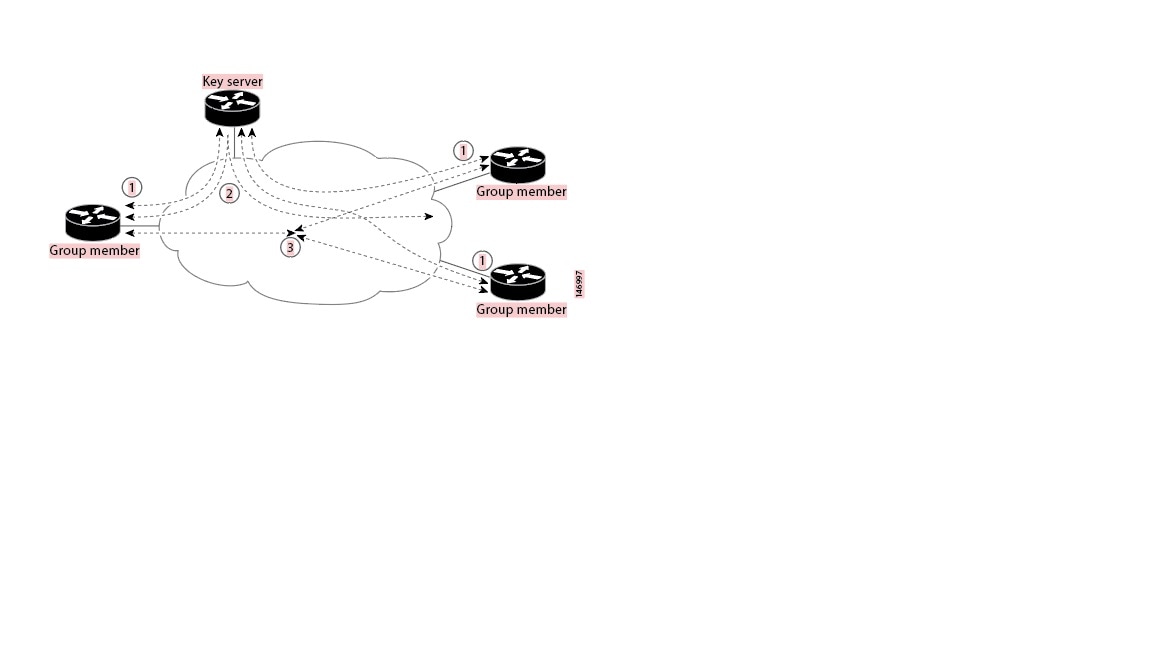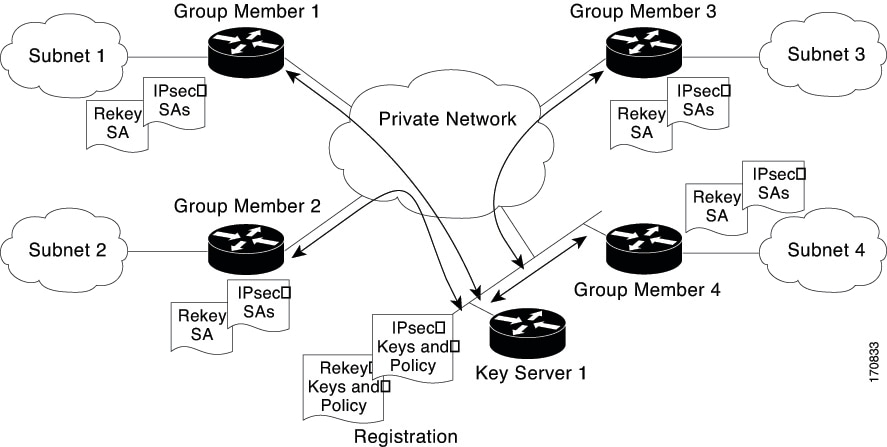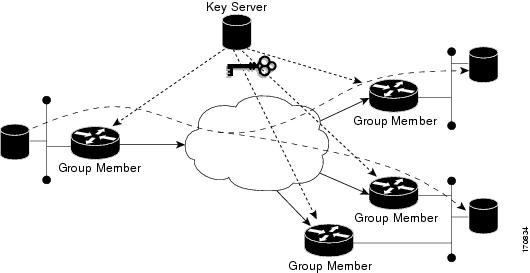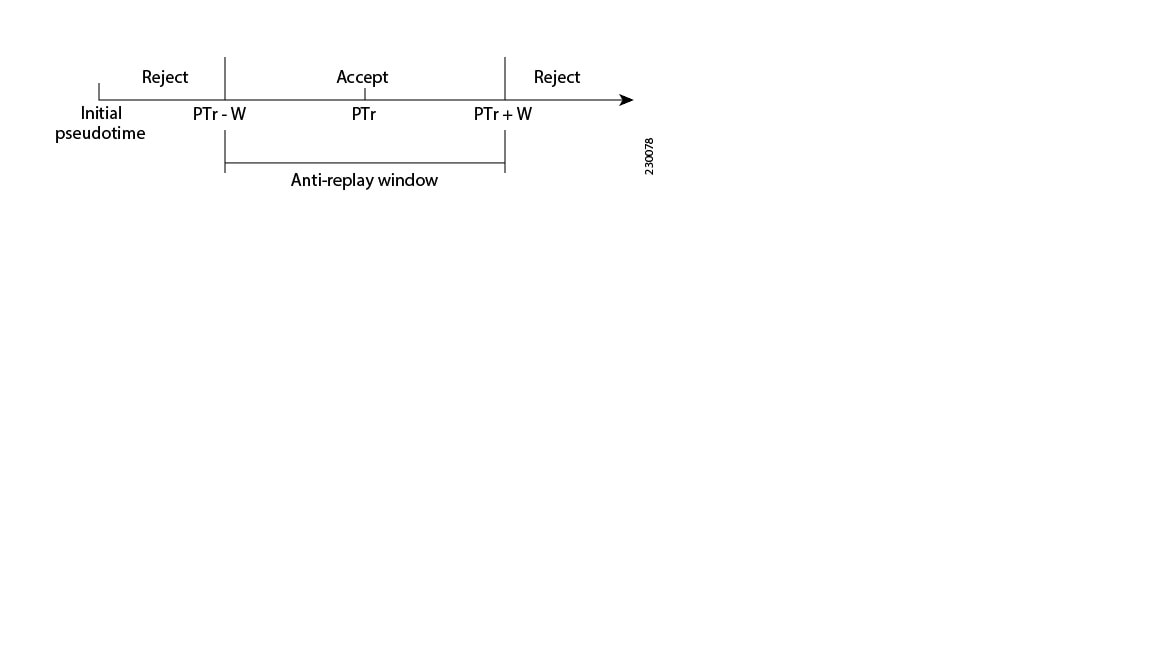|
COOP_CONFIG_MISMATCH
|
The configuration between the primary KS and secondary KS are mismatched.
|
|
COOP_KS_ADD
|
A KS has been added to the list of cooperative KSs in a group.
|
|
COOP_KS_ELECTION
|
The local KS has entered the election process in a group.
|
|
COOP_KS_REACH
|
The reachability between the configured cooperative KSs is restored.
|
|
COOP_KS_REMOVE
|
A KS has been removed from the list of cooperative KSs in a group.
|
|
COOP_KS_TRANS_TO_PRI
|
The local KS transitioned to a primary role from being a secondary server in a group.
|
|
COOP_KS_UNAUTH
|
An unauthorized remote server tried to contact the local KS in a group. Could be considered a hostile event.
|
|
COOP_KS_UNREACH
|
The reachability between the configured cooperative KSs is lost. Could be considered a hostile event.
|
|
COOP_KS_VER_MISMATCH
|
KSs are running different versions of the Cisco IOS code.
|
|
COOP_PACKET_DROPPED
|
A hard limit set on the driver buffer size prevents the sending of packets this size or larger.
|
|
GDOI-3-GDOI_REKEY_SEQ_FAILURE
|
The rekey message is rejected because the sequence number antireplay check failed.
|
|
GDOI-3-GM_NO_CRYPTO_ENGINE
|
No crypto engine is found due to a lack of resources or an unsupported feature requested.
|
|
GDOI-3-PSEUDO_TIME_LARGE
|
The rekey has a larger pseudotime that exceeds the calculated allowable pseudotime difference.
|
|
GDOI-3-PSEUDO_TIME_TOO_OLD
|
The rekey has a smaller pseudotime that exceeds the calculated allowable pseudotime difference.
|
|
GDOI-4-GDOI_ANN_TIMESTAMP_ LARGE
|
The secondary KS receives from the primary KS an ANN that has a larger pseudotime that exceeds the calculated allowable pseudotime
difference.
|
|
GDOI-4-GDOI_ANN_TIMESTAMP_ TOO_OLD
|
The secondary KS receives from the primary KS an ANN that has a smaller pseudotime that exceeds the calculated allowable
pseudotime difference.
|
|
GDOI-5-COOP_KS_BLOCK_NEW_GM_REGISTER
|
The secondary KS temporarily blocks a GM from registering in a group because it has not received a valid pseudotime from
the primary KS.
|
|
GDOI-5-COOP_KS_VALID_ANN_ TIMER_EXPIRED
|
The secondary KS keeps receiving ANNs with invalid pseudotimes after three retransmits. The secondary KS temporarily blocks
new group-member registration until a valid ANN is received.
|
|
GDOI_ACL_NUM
|
The ACL has too many entries. GDOI will honor only the first 100 ACL entries specified.
|
|
GDOI_REKEY_FAILURE
|
During GDOI rekey the payload parsing failed on this GM from the KS.
|
|
GM_ACL_MERGE
|
The ACL differences between a GM and KS are resolved and a merge took place.
|
|
GM_ACL_PERMIT
|
The GM can support only an ACL for “deny.” Any traffic matching the “permit” entry will be dropped.
|
|
GM_CLEAR_REGISTER
|
The
clear
crypto
gdoi command has been executed by the local GM.
|
|
GM_CM_ATTACH
|
A crypto map has been attached for the local GM.
|
|
GM_CM_DETACH
|
A crypto map has been detached for the local GM.
|
|
GM_CONV_SA_DUPLEX
|
IPsec SAs have been converted to bidirectional mode in a group on a GM.
|
|
GM_CONV_SA_DUPLEX_LOCAL
|
IPsec SAs have been converted to bidirectional mode in a group on a GM by a CLI command.
|
|
GM_DELETE
|
A GM has been deleted in a group from a KS.
|
|
GM_ENABLE_GDOI_CM
|
A GM has enabled ACL on a GDOI crypto map in a group with a KS.
|
|
GM_HASH_FAIL
|
During GDOI registration protocol, a message sent by the KS has bad or no hash.
|
|
GM_INCOMPLETE_CFG
|
Registration cannot be completed because the GDOI group configuration may be missing the group ID, server ID, or both.
|
|
GM_NO_IPSEC_FLOWS
|
The hardware limitation for IPsec flow limit reached. Cannot create any more IPsec SAs.
|
|
GM_RE_REGISTER
|
The IPsec SA created for one group may have been expired or cleared. Need to re-register to the KS.
|
|
GM_RECV_DELETE
|
A message sent by the KS to delete the GM has been received.
|
|
GM_RECV_REKEY
|
Rekey received.
|
|
GM_REGS_COMPL
|
Registration complete.
|
|
GM_REJECTING_SA_PAYLOAD
|
During GDOI registration protocol, a proposal sent by the KS was refused by the local GM.
|
|
GM_REKEY_NOT_RECD
|
A GM has not received a rekey message from a KS in a group. Currently unimplemented.
|
|
GM_REKEY_TRANS_2_MULTI
|
A GM has transitioned from using a unicast rekey mechanism to using a multicast mechanism.
|
|
GM_REKEY_TRANS_2_UNI
|
A GM has transitioned from using a multicast rekey mechanism to using a unicast mechanism.
|
|
GM_SA_INGRESS
|
A received-only ACL has been received by a GM from a KS in a group.
|
|
GM_UNREGISTER
|
A GM has left the group.
|
|
KS_BAD_ID
|
A configuration mismatch exists between a local KS and a GM during GDOI registration protocol.
|
|
KS_BLACKHOLE_ACK
|
A KS has reached a condition of null route messages from a GM. Could be considered a hostile event.
|
|
KS_CLEAR_REGISTER
|
The
clear
crypto
gdoi command has been executed by the local KS.
|
|
KS_CONV_SAS_DUPLEX
|
IPsec SAs have been converted to bidirectional mode in a group.
|
|
KS_CONV_SAS_INGRESS
|
IPsec SAs have been converted to receive-only mode in a group.
|
|
KS_FIRST_GM, GDOI, LOG_INFO
|
A local KS has received the first GM joining the group.
|
|
KS_GM_REJECTS_SA_PAYLOAD
|
During GDOI registration protocol, a proposal sent by the KS was refused by the GM.
|
|
KS_GM_REVOKED
|
During rekey protocol, an unauthorized member tried to join a group. Could be considered a hostile event.
|
|
KS_GROUP_ADD
|
A configuration command has been executed to add a KS in a group.
|
|
KS_GROUP_DELETE
|
A configuration command has been executed to remove a KS from a group.
|
|
KS_HASH_FAIL
|
During GDOI registration protocol, a message sent by the GM has a bad or no hash.
|
|
KS_LAST_GM
|
The last GM has left the group on the local KS.
|
|
KS_NACK_GM_EJECT
|
The KS has reached a condition of not receiving an ACK message from a GM and has been ejected.
|
|
KS_NO_RSA_KEYS
|
RSA keys were not created or they are missing.
|
|
KS_REGS_COMPL
|
The KS has successfully completed a registration in a group.
|
|
KS_REKEY_TRANS_2_MULTI
|
The group has transitioned from using a unicast rekey mechanism to a multicast mechanism.
|
|
KS_REKEY_TRANS_2_UNI
|
The group has transitioned from using a multicast rekey mechanism to using a unicast mechanism.
|
|
KS_SEND_MCAST_REKEY
|
Sending multicast rekey.
|
|
KS_SEND_UNICAST_REKEY
|
Sending unicast rekey.
|
|
KS_UNAUTHORIZED
|
During GDOI registration protocol, an unauthorized member tried to join a group. Could be considered a hostile event.
|
|
KS_UNSOL_ACK
|
The KS has received an unsolicited ACK message from a past GM or is under a DOS attack. Could be considered a hostile event.
|
|
PSEUDO_TIME_LARGE
|
A GM has received a pseudotime with a value that is largely different from its own pseudotime.
|
|
REPLAY_FAILED
|
A GM or KS has failed an antireplay check.
|
|
UNAUTHORIZED_IDENTITY
|
The registration request was dropped because the requesting device was not authorized to join the group.
|
|
UNAUTHORIZED_IPADDR
|
The registration request was dropped because the requesting device was not authorized to join the group.
|
|
UNEXPECTED_SIGKEY
|
An unexpected signature key was found that frees the signature key.
|
|
UNREGISTERED_INTERFACE
|
Receiving registration from unregistered interface. Stop processing it.
|
|
UNSUPPORTED_TEK_PROTO
|
Unexpected TEK protocol.
|














 Feedback
Feedback